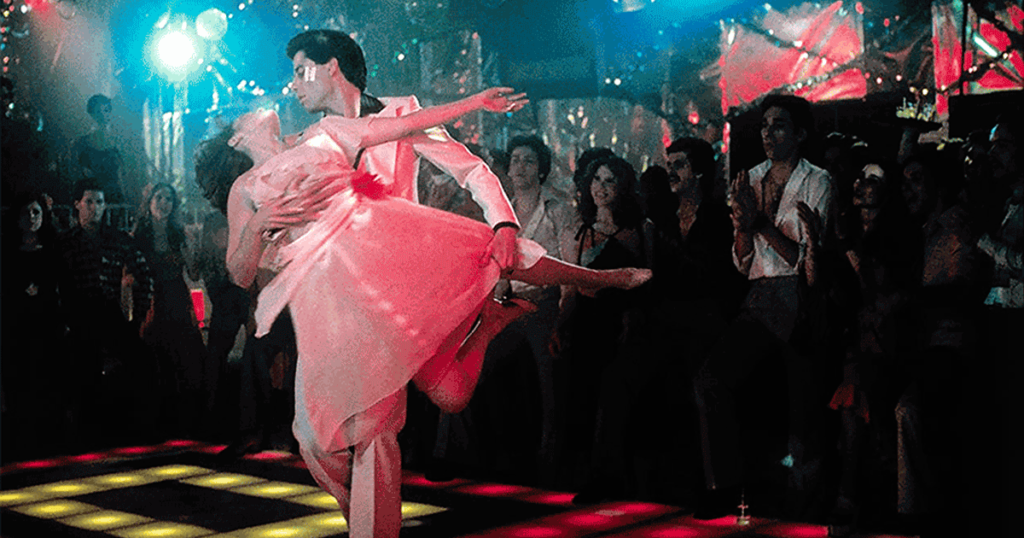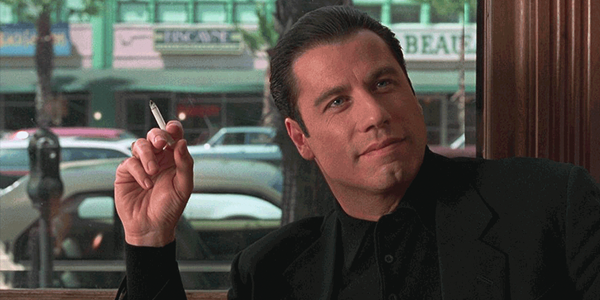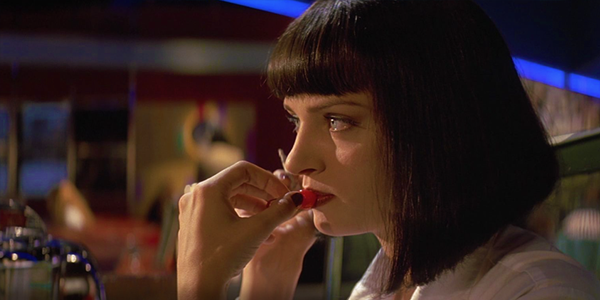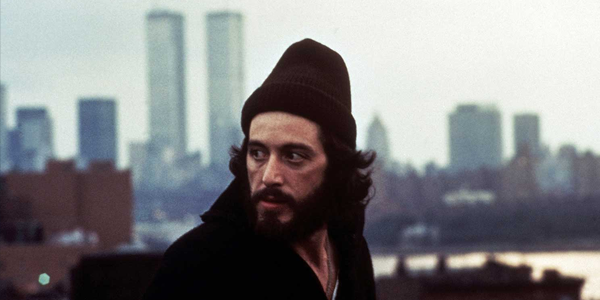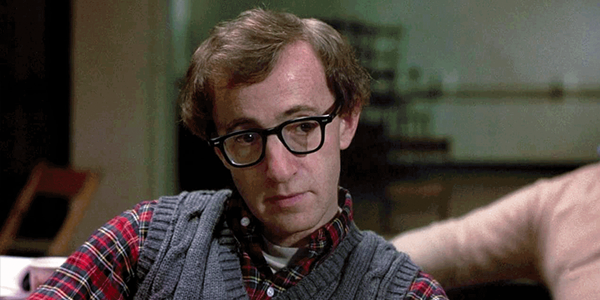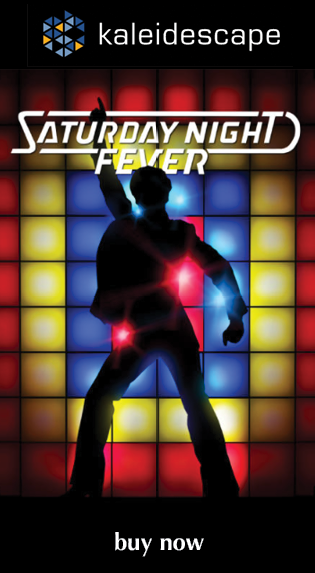ALSO ON CINELUXE
Sign up for our monthly newsletter
to stay up to date on Cineluxe
This might not be a great film but it’s a cultural classic, and it’s well presented in this 4K HDR release
by Dennis Burger
updated August 15, 2023
Watching Saturday Night Fever for the first time for this review was an uneven slog. On the one hand, you have John Travolta’s performance, which—even as a non-fan—I have to admit is captivating. There’s something so utterly and effortlessly hypnotic about his turn as Tony Manero, a virtually prospectless 19-year-old who works in a paint shop by day and finds his only legitimate escape from his mundane life on the dance floors of a local discotheque by night.
There’s also the incredible soundtrack, packed with classics like “Boogie Shoes,” “Night on Disco Mountain,” “If I Can’t Have You,” and of course the big four from the Bee Gees: “More Than a Woman,” “Night Fever,” “How Deep Is Your Love,” and the ever-popular “Stayin’ Alive.”
And then there’s everything else. While there’s a legitimate attempt here to ape the zeitgeist of the era and deliver a gritty slice-of-life drama, the results are almost all style and no substance. The screenplay simply bites off more than anyone involved (other than Travolta) is capable of chewing. In the hands of a better director, a more capable cinematographer, and an editor with a backbone, it could have been decent.
Perhaps the film’s biggest sin is that it’s meandering and unfocused, with far too many subplots that do nothing to counter its overall thematic or narrative inertia. And that would be fine if literally anyone in the supporting cast rose to Travolta’s level, but the rest of the performances are laughably bad—save perhaps Martin Shakar’s turn as Tony’s brother.
But if Saturday Night Fever is your jam, I’m not here to yuck your yum. I’m glad there’s something in life that brings you joy. I’ve also got some really good news for you: The UHD HDR release is a model for how these sorts of remasters/restorations should be handled. On Kaleidescape at least, this presentation looks like really well-preserved 35mm film—no more, no less.
There’s an incredible amount of detail on the screen, especially in closeups, combined with a healthy (though never distracting) level of wholly organic film grain that varies based on the film stock used from scene to scene. In brighter environments, the grain is fine and all but unnoticeable. In nighttime scenes and interiors shots of the discotheque, grain is a bit more prominent but never out of line with expectations.
The dance-floor scenes are also, unsurprisingly, where the high dynamic range shines. In a handful of shots, the disco balls and lighting are eye-reactive. But aside from that, HDR is applied judiciously to give the image a bit of much-needed dimensionality and add some subtle enhancements to the predominately warm color palette. In so many ways, this new presentation of Saturday Night Fever is a cinephile’s dream.
It’s not reference-quality home cinema demo material, though, but that’s more due to flaws in the source than anything with the restoration or transfer. The original camera negative is plagued by rampant halation, which is, of course, preserved here. There’s also the fact that, aside from the dance sequences and the last few minutes of the film, the composition of any given shot would have been more interesting if director of photography Ralf Bode (Uncle Buck, Made in America) had simply closed his eyes and pointed his camera at the loudest sound he could hear.
But none of that has any bearing on the quality of the transfer, which is the platonic ideal of how you should handle source material like this. The wacky manipulation of contrast levels, digital scrubbing, and edge enhancement that plague far too many 4K restorations of films of this era are nowhere to be seen. This should be celebrated, and Paramount deserves props for handling the original negative with such care.
The DTS-HD Master Audio 5.1 is a wonderful example of how material like this should be remixed for modern sound systems. It’s an absolute blast from beginning to end. If you’re particularly bothered by the mismatch in fidelity that comes from marrying low-fidelity audio stems from the ’70s with pristine, high-fidelity music, you’ll likely notice a bit of that here. But it’s never distracting; it never pulls you out of the experience of the film.
Had my fingers been the ones fiddling with the mixing knobs, I probably would have turned in a subtler surround mix for the music. But I think I would have been wrong. The disco tunes—as well as the score music by Barry, Maurice, and Robin Gibb—explode from every corner of the room and, of course, gave my subwoofers a proper beating. There was one brief instance, during the last appearance of “More Than a Woman” where I thought the mix leaned a little too hard on the surrounds, and as a result pushed the vocals down in the mix. But that’s my only criticism.
Kaleidescape’s release of the film is unfortunately devoid of extras, but that’s hardly surprising. In the digital domain, the only provider to include all the goodies from the 40th-anniversary Blu-ray release a few years ago is Apple. So if you’re itching to see retrospective documentaries, hear John Badham’s audio commentary, or check out the director’s cut—which adds four minutes to the runtime and isn’t available in 4K, as far as I can tell—your options are limited. But if you’re just itching to revisit the film again in top-shelf quality, Kaleidescape’s download is everything you could hope for in terms of audiovisual presentation.
Dennis Burger is an avid Star Wars scholar, Tolkien fanatic, and Corvette enthusiast who somehow also manages to find time for technological passions including high-end audio, home automation, and video gaming. He lives in the armpit of Alabama with his wife Bethany and their four-legged child Bruno, a 75-pound American Staffordshire Terrier who thinks he’s a Pomeranian.
PICTURE | This 4K HDR release is a model for how these sorts of remasters/restorations should be handled, looking like really well-preserved 35mm film—no more, no less
SOUND | A blast from beginning to end, the DTS-HD Master Audio 5.1 is a wonderful example of how material like this should be remixed for modern sound systems
© 2023 Cineluxe LLC


